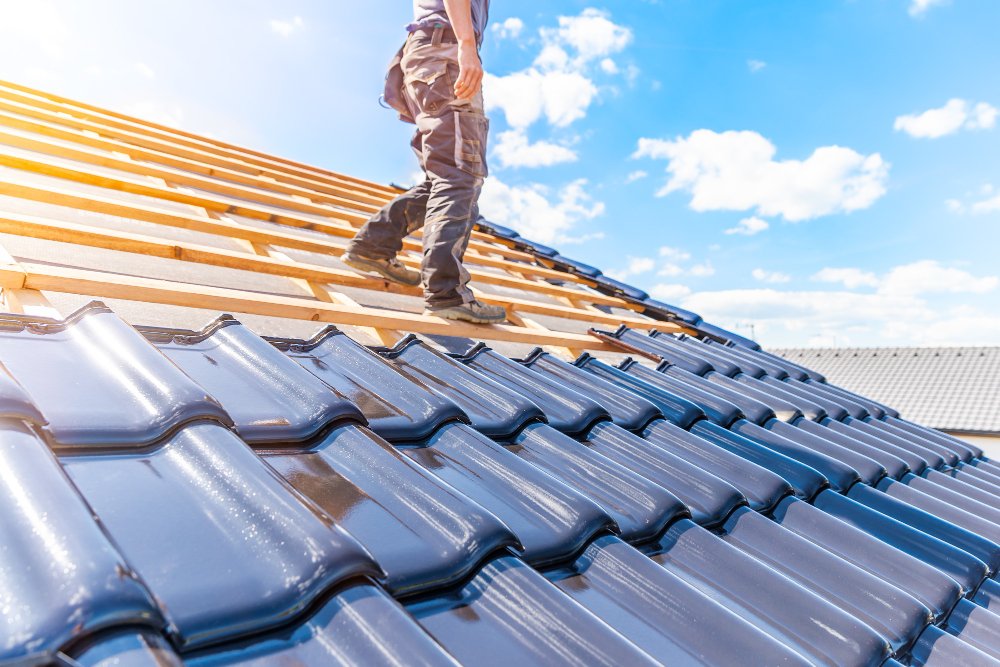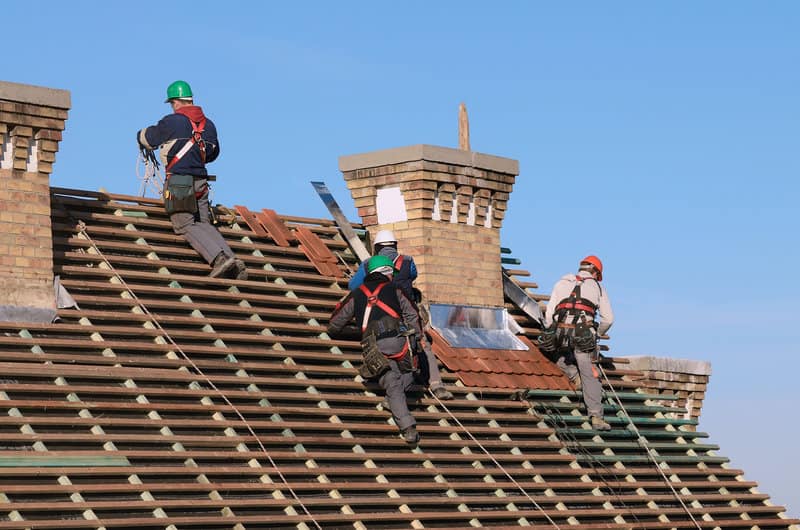Work with a highly rated Roofing Contractor for quality roofing services.
How to Examine Various Roof Covering Alternatives for Your Building Demands
Evaluating roofing alternatives for your building calls for a detailed approach that thinks about different variables such as the intended use of the framework, local climate problems, and product attributes - Sylvania Roofing Contractor. It is crucial to consider the benefits and drawbacks of different roof kinds, from asphalt shingles to steel and clay floor tiles, while also factoring in first costs and lasting maintenance.
Analyzing Your Building's Requirements
To effectively examine roof covering choices, begin by completely evaluating your structure's demands. Start by considering the structure's intended usage, as various frameworks may require varying roof covering specs. As an example, domestic roofings typically focus on aesthetics and insulation, while commercial buildings may concentrate on resilience and load-bearing ability.
Following, assess the local climate conditions that will impact roof covering performance. Factors such as temperature variations, rainfall levels, and wind patterns can affect material option and layout. A roof that stands out in a temperate climate might not carry out as well in locations prone to hefty snowfall or severe warm.
In addition, analyze the architectural honesty of your structure. Guarantee that the existing structure can sustain the chosen roof materials, especially if thinking about larger choices. It is also vital to evaluate any kind of neighborhood building ordinance or guidelines that may determine particular requirements for roof covering systems.

Contrasting Roof Covering Materials
Once a comprehensive assessment of your building's needs has actually been finished, the next action entails comparing numerous roofing products. Each material supplies distinctive advantages and drawbacks, making it necessary to straighten your selection with your particular requirements and conditions.
Asphalt tiles are widely identified for their affordability and simplicity of installation, making them a preferred choice for household buildings. On the other hand, steel roof covering, recognized for its resilience and long life, can withstand rough weather but may include a greater preliminary investment.
Clay and concrete ceramic tiles offer outstanding thermal insulation and aesthetic charm, especially for Mediterranean-style design, yet they require a more durable architectural support because of their weight. Wood trembles offer an all-natural look and excellent insulation residential properties but might demand more maintenance and are prone to fire risks.
Reviewing Expense and Budget
Examining your roofing options necessitates a careful analysis of expense and budget plan factors to consider. The overall budget plan for a roof covering project consists of numerous variables, including material costs, labor expenditures, maintenance, and prospective long-term cost savings. It is vital to establish a clear spending plan prior to discovering certain roofing materials, as this will certainly lead the decision-making procedure and assist you stay clear of overspending.
Begin by getting quotes from several specialists to understand labor expenses in your region. Guarantee that these price quotes consist of all necessary services, such as elimination of the old roofing system, setup, and any type of additional features, like insulation or ventilation renovations - Roofing Contractor. Next off, assess the expense of different roofing products, considering both initial installment expenses and expected lifespan

Recognizing Power Effectiveness
Energy effectiveness plays an important function in the choice of roofing products and systems, dramatically impacting both energy consumption and total comfort within a building. A well-chosen roofing can enhance thermal performance, reducing the demand for heating and cooling systems, which in turn lowers power expenses and lessens environmental impact.
When examining roofing options, take into consideration products that find out here now reflect instead of take in warm. Light-colored or reflective roof items can considerably reduce roof covering surface area temperature levels, leading to reduced energy use throughout hot months. Additionally, proper insulation and air flow are vital to maximize the energy effectiveness of the whole roof. Insulation prevents warmth transfer, while ventilation minimizes heat accumulation in the attic space.
One more vital aspect is the roof's my blog long life and maintenance demands. Resilient products that need less frequent replacement contribute to long-lasting power financial savings. The energy efficiency of a roof covering system can additionally be evaluated through its conformity with recognized sustainability scores such as ENERGY CELEBRITY or LEED.
Thinking About Visual Allure
A roof covering's visual allure considerably influences the overall look of a structure, enhancing its architectural design and boosting visual charm. Sylvania Roofing Contractor. When assessing roofing choices, it is vital to take into consideration exactly how the selected material, shade, and design will certainly integrate with the existing structure and area. A properly designed roof can boost even the most basic of structures, changing them into aesthetic focal points
Different roofing products use different aesthetic high qualities. Traditional tiles might stimulate a classic appeal, while steel roof can give a modern, streamlined appearance. Additionally, the color of the roof covering product plays a crucial role; lighter tones can make a building appear even more roomy, while darker tones may my response develop a cozier ambiance.
In addition, architectural elements, such as dormers and eaves, can enhance the roof covering's visual effect. It is suggested to talk to expert developers or designers to guarantee the chosen roof alternative aligns with the general style intent. Inevitably, a roof needs to not only provide functional benefits yet additionally contribute favorably to the structure's aesthetic, reflecting the proprietor's preference and the character of the surrounding environment.
Conclusion
